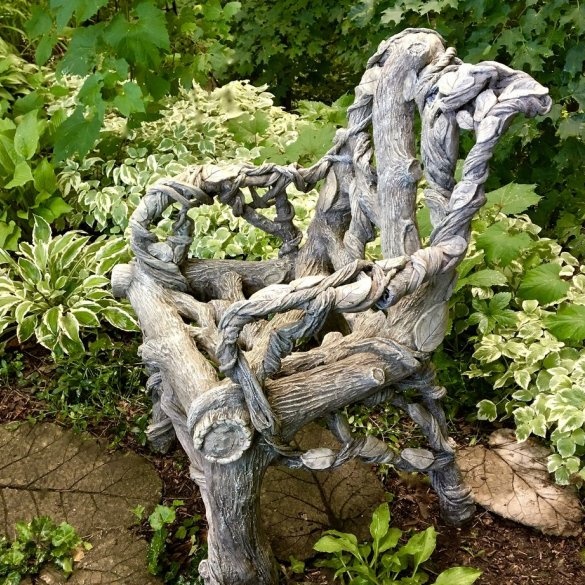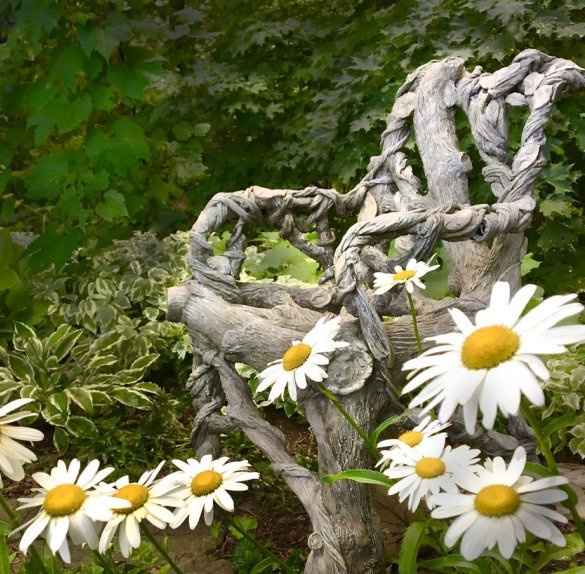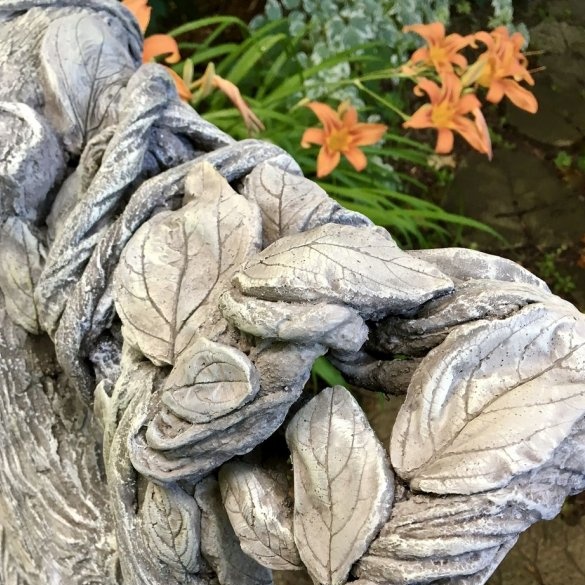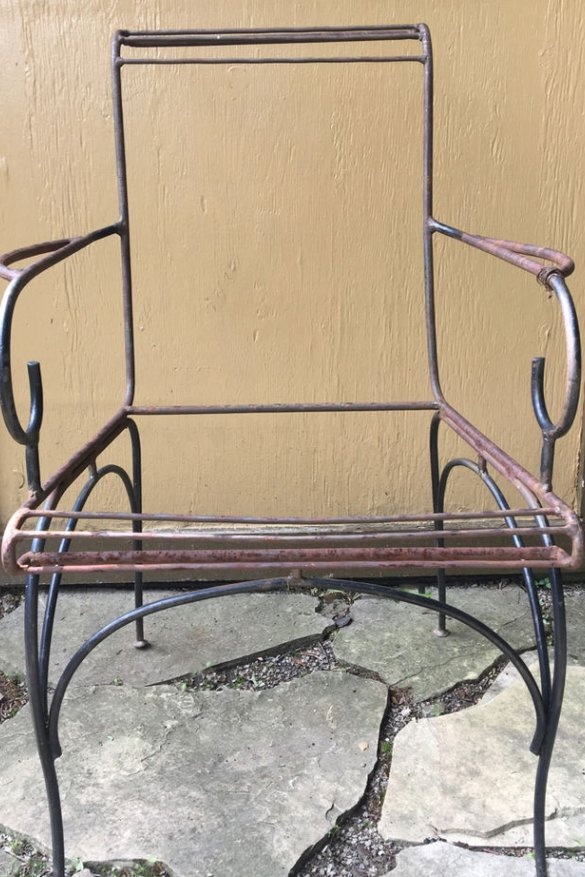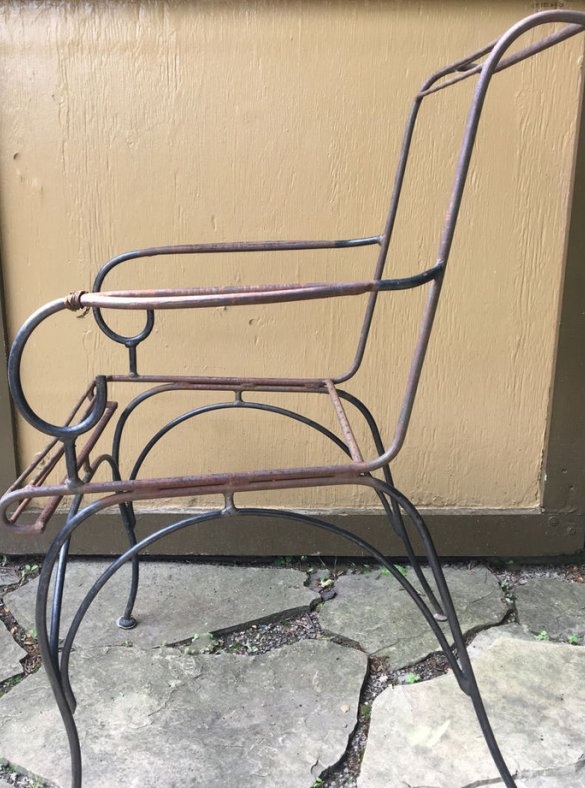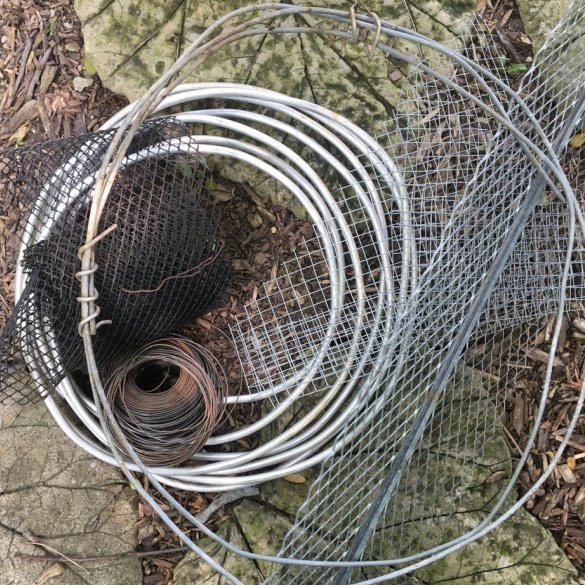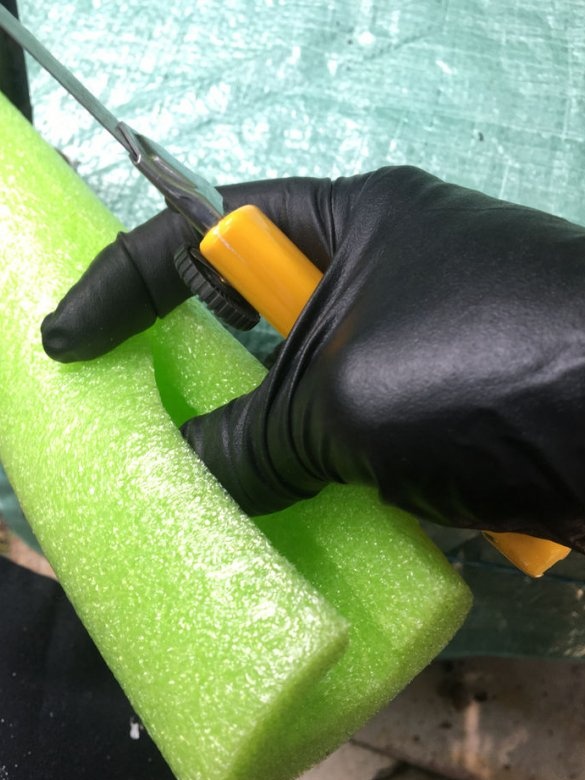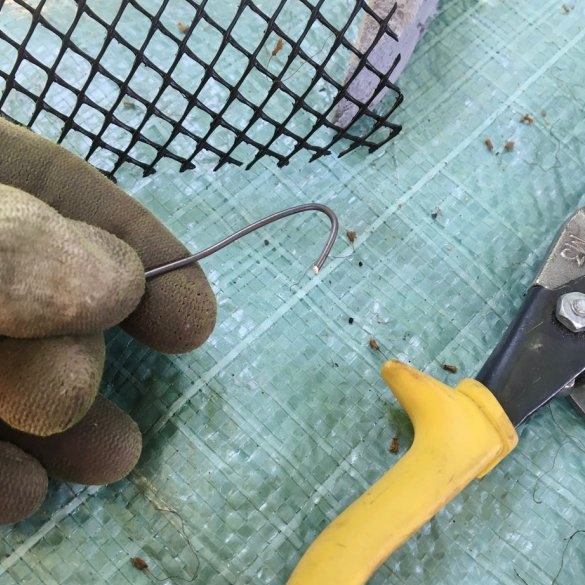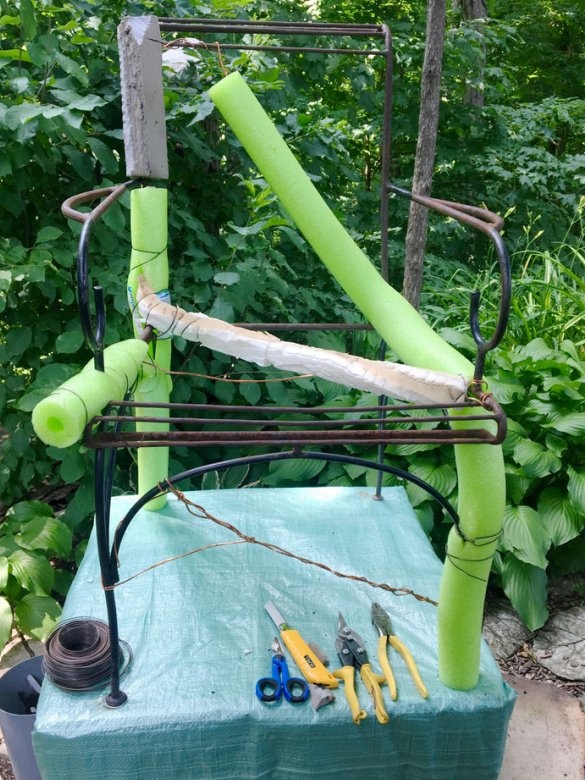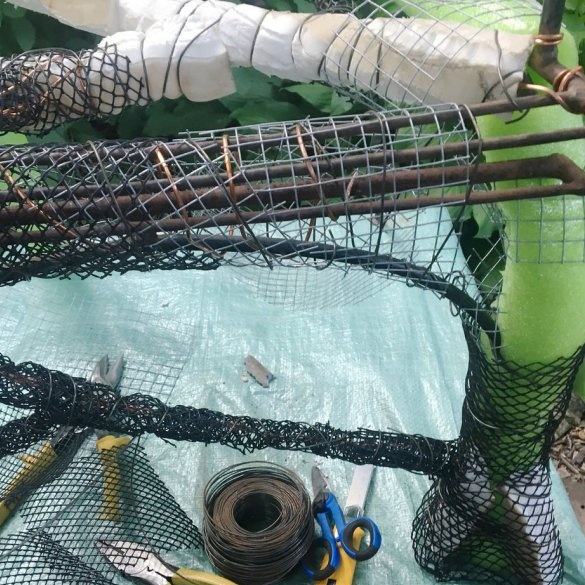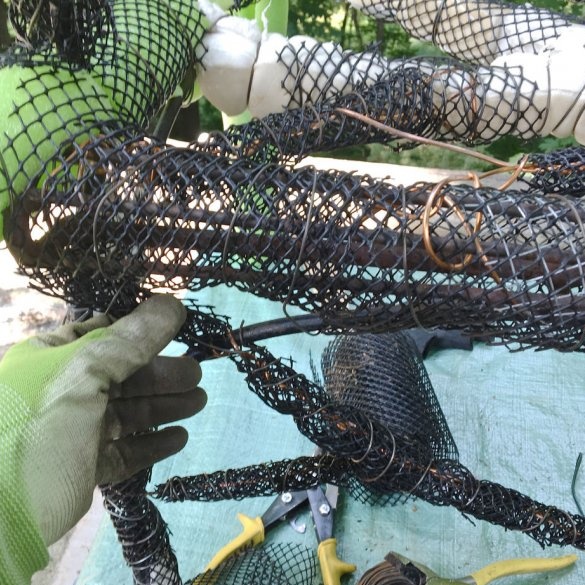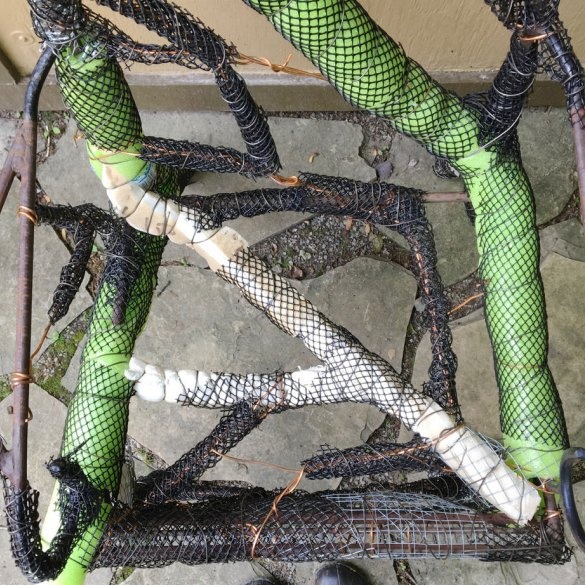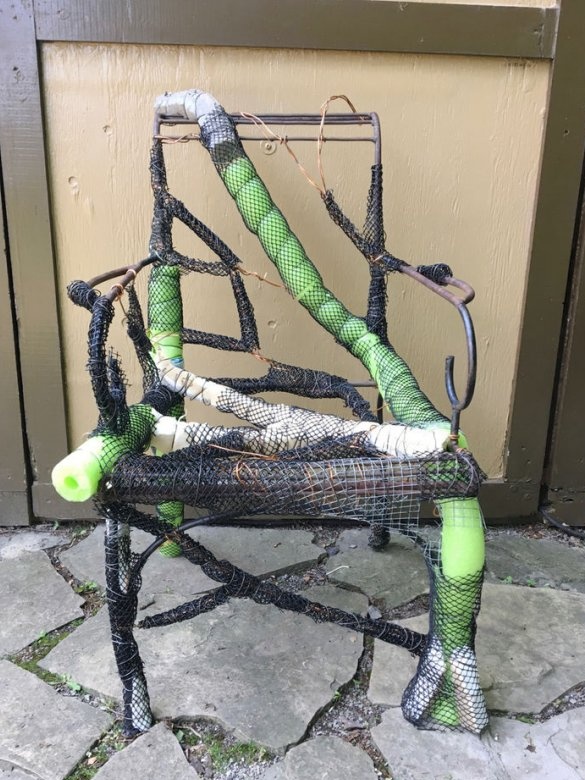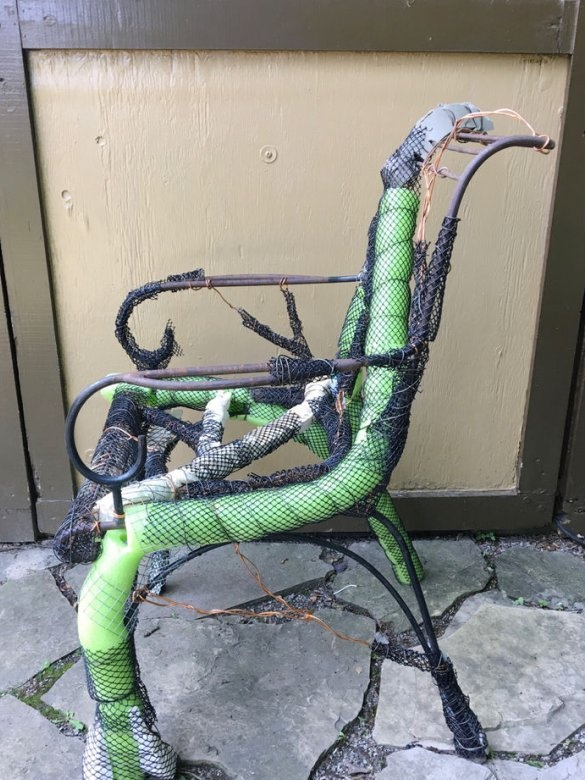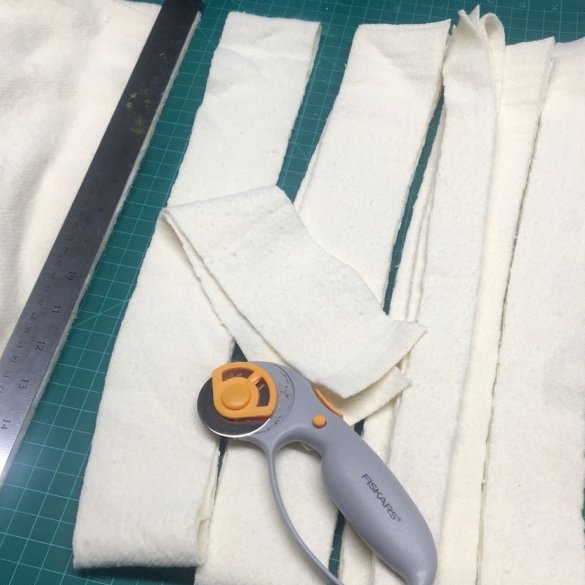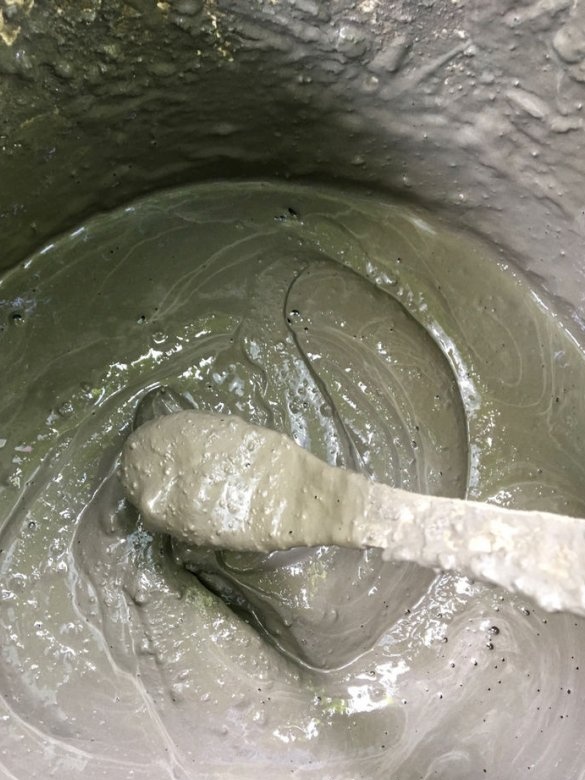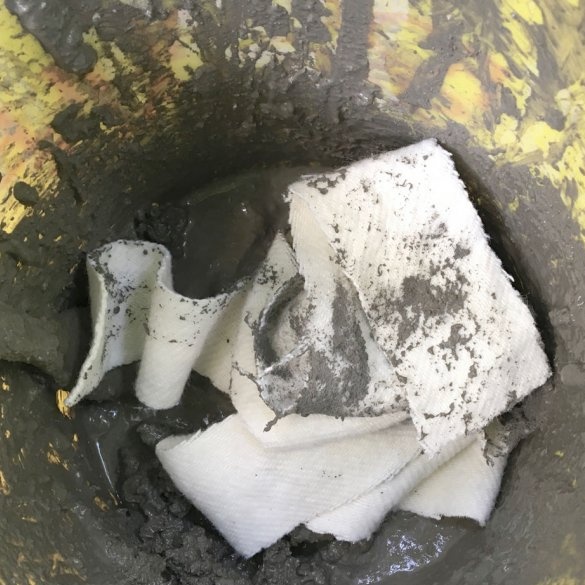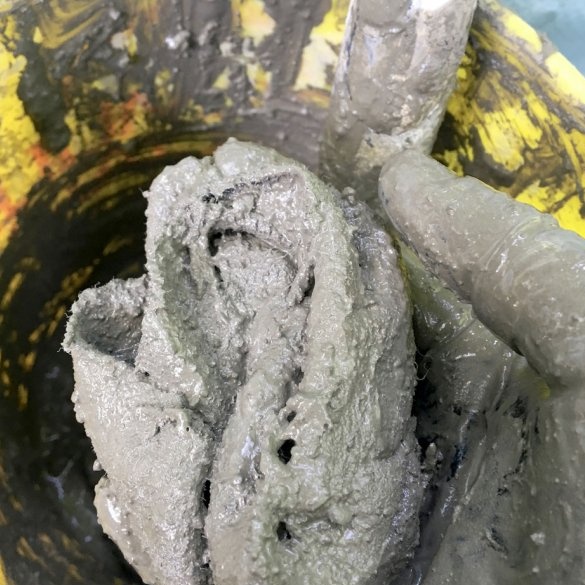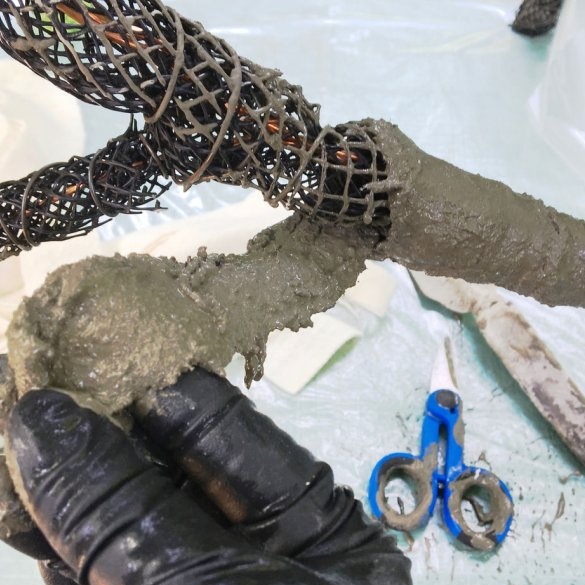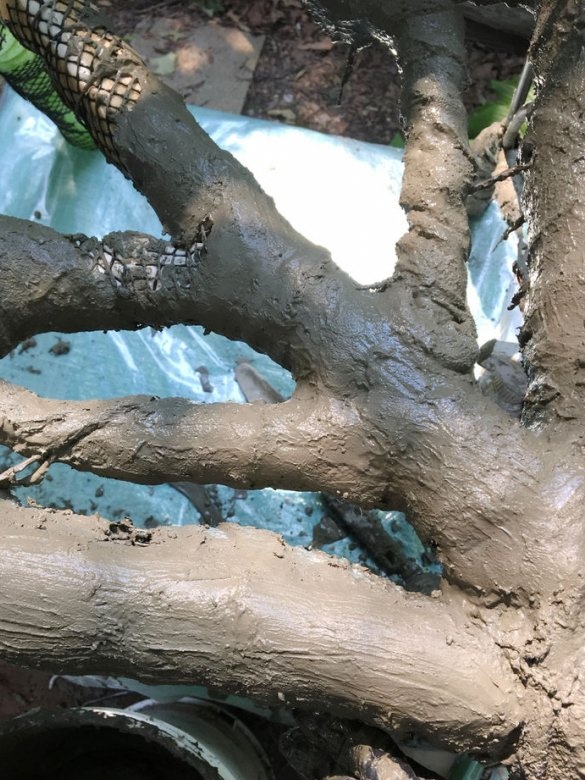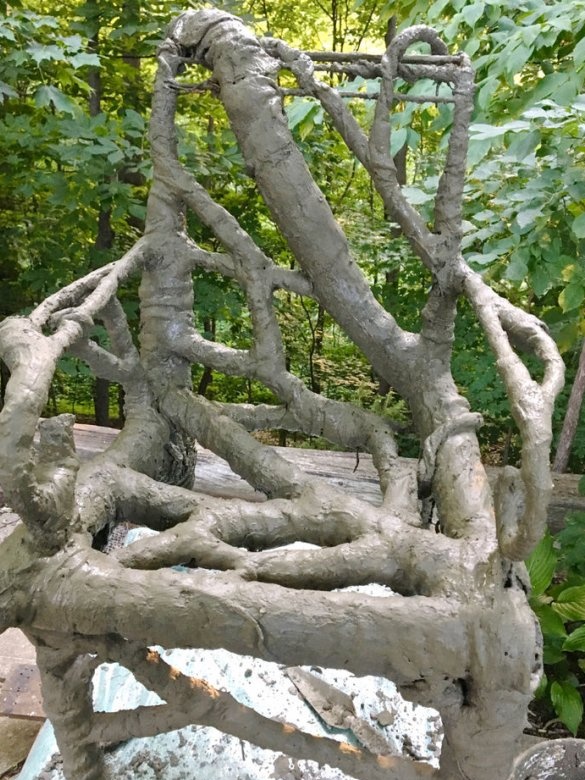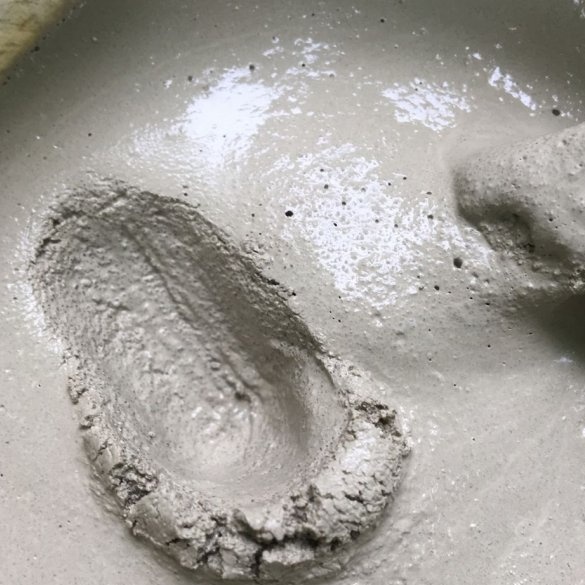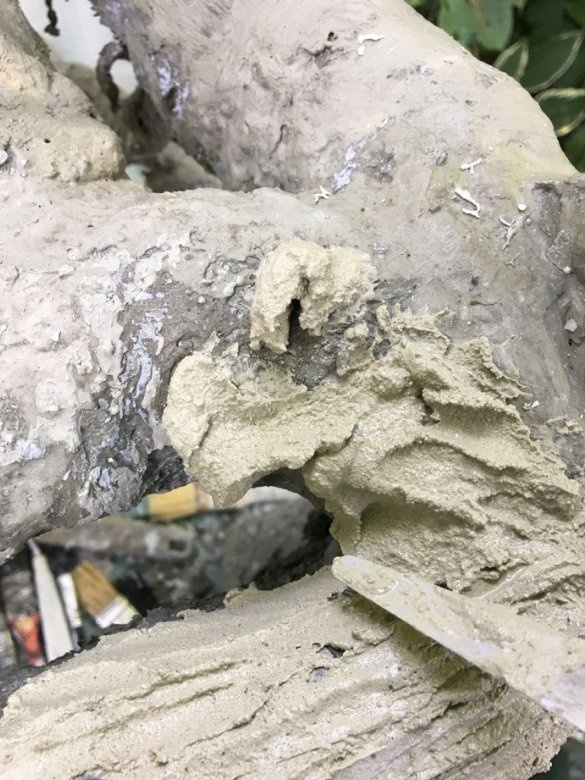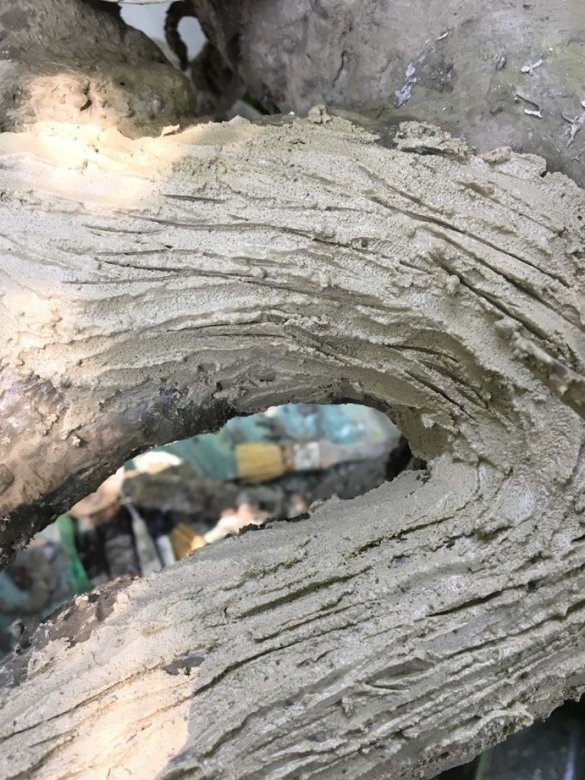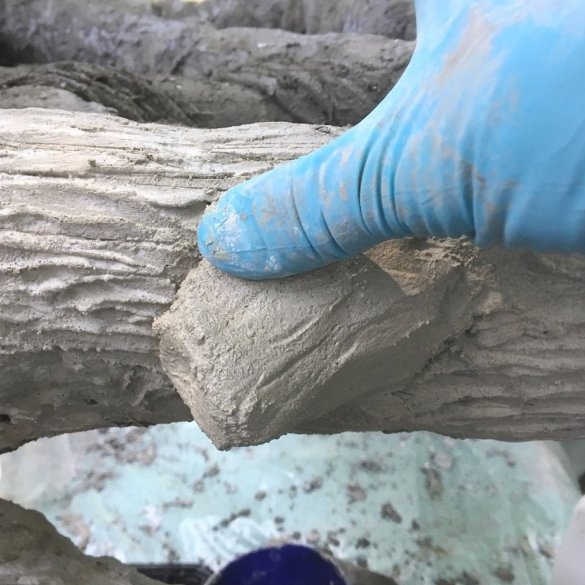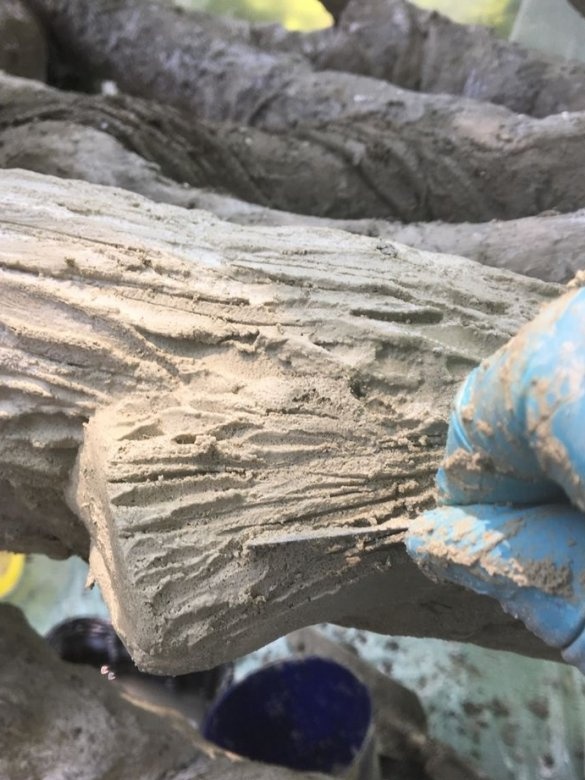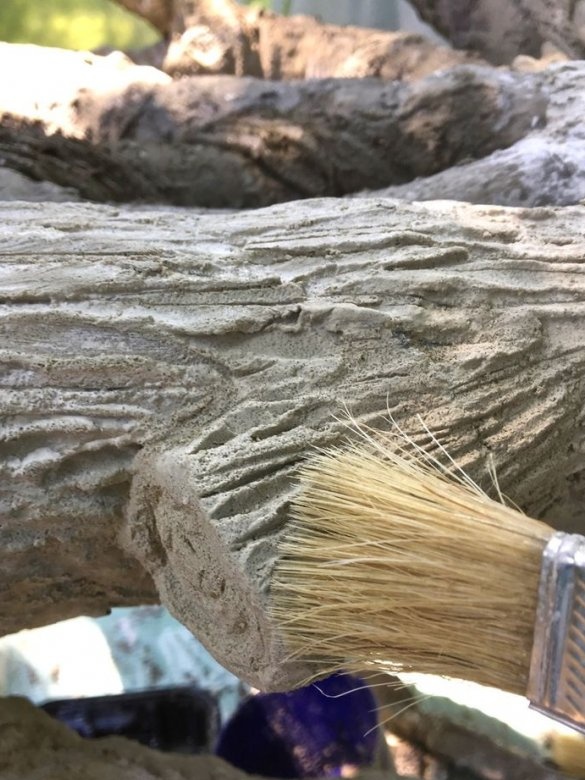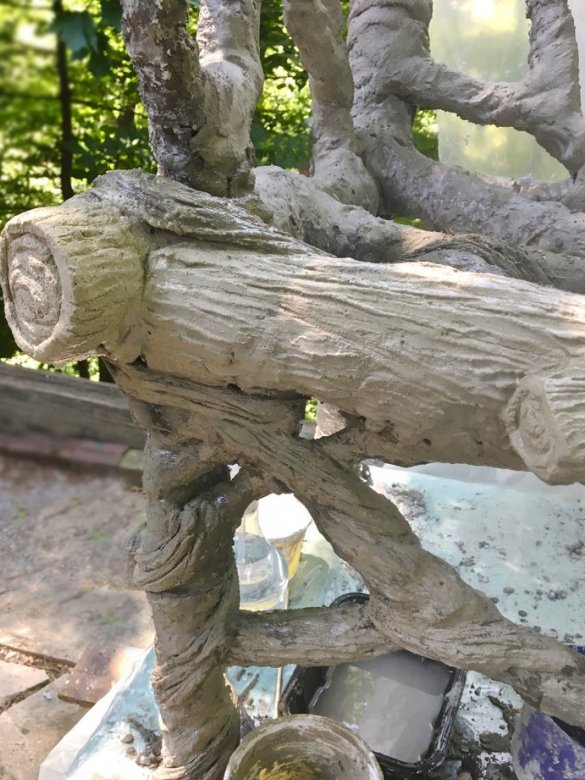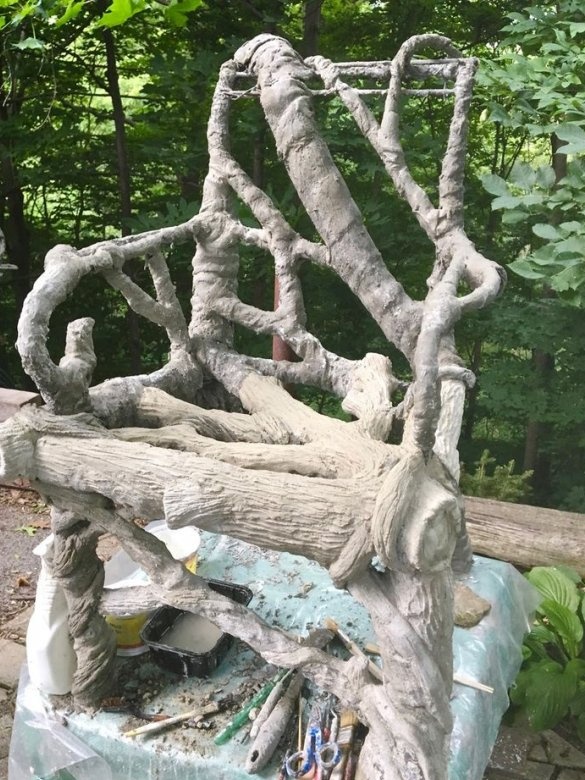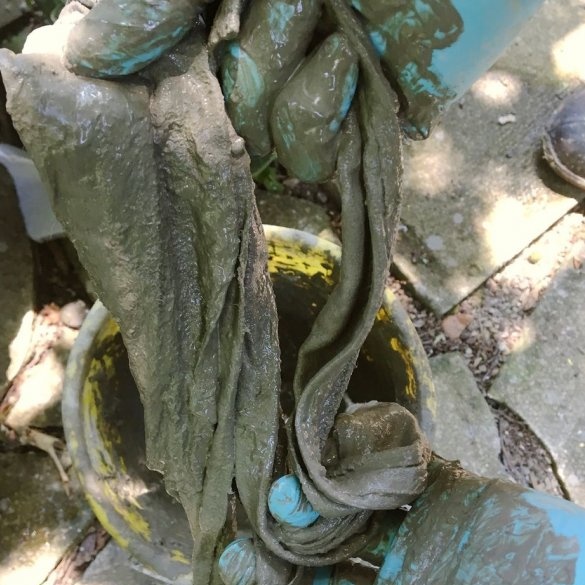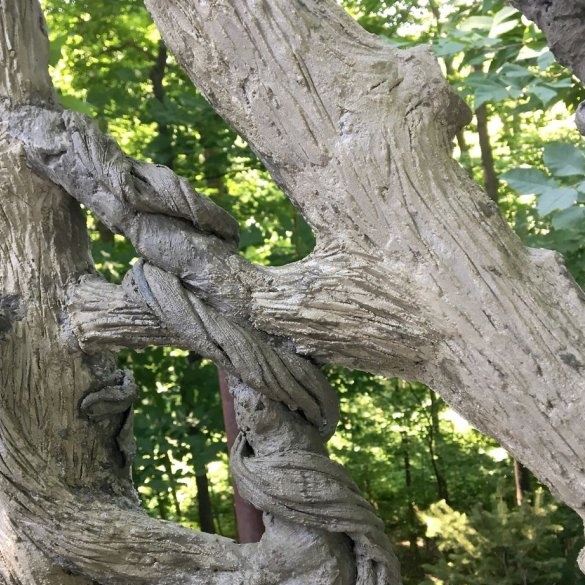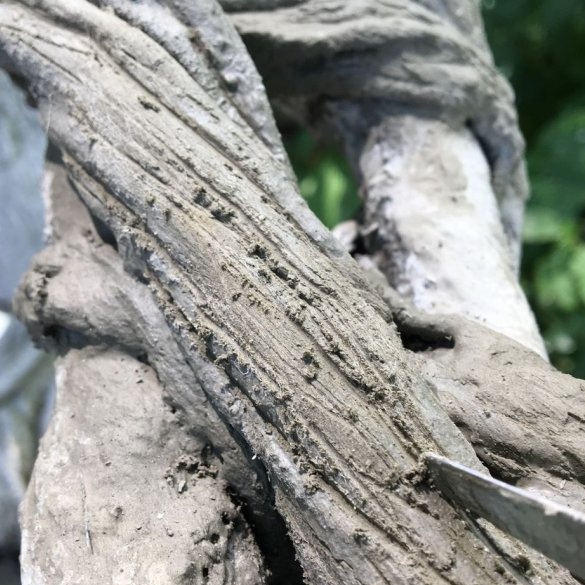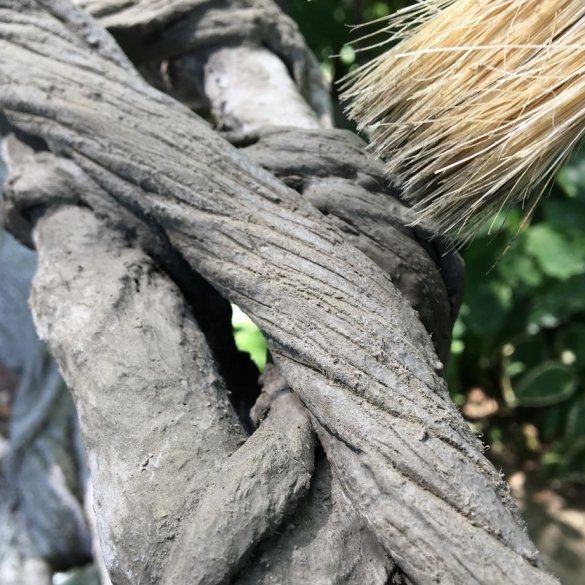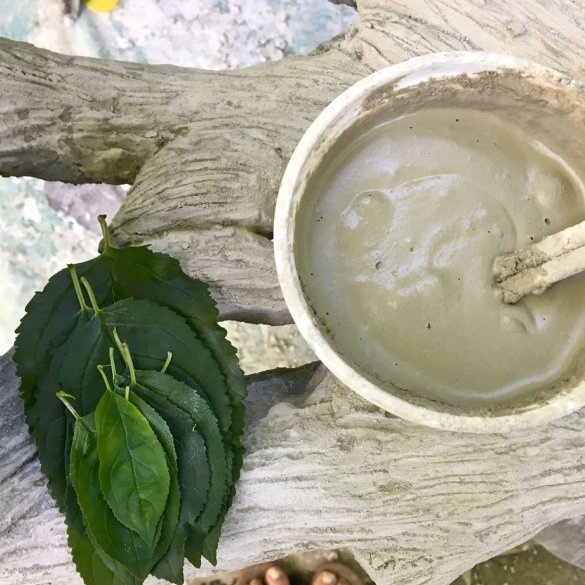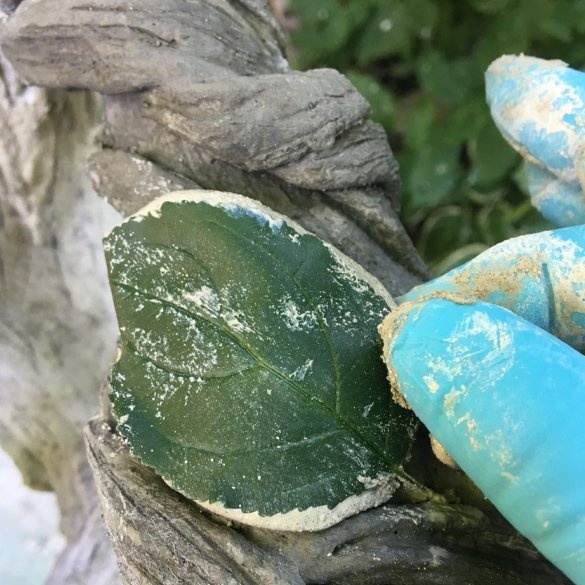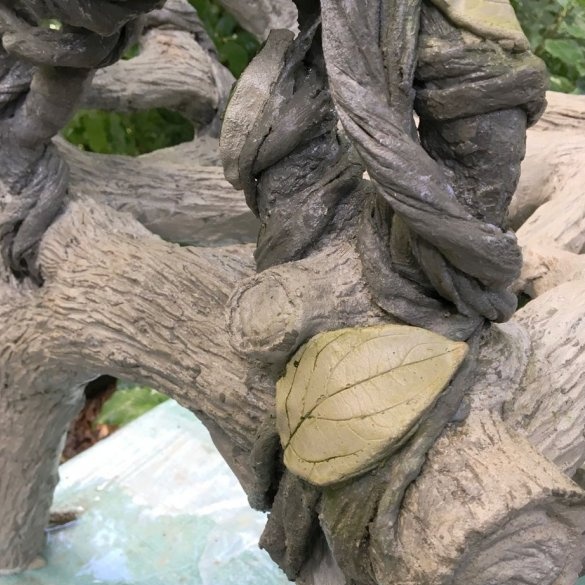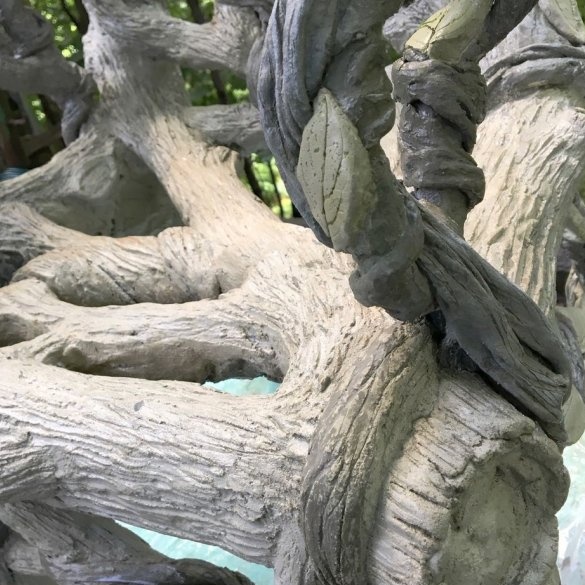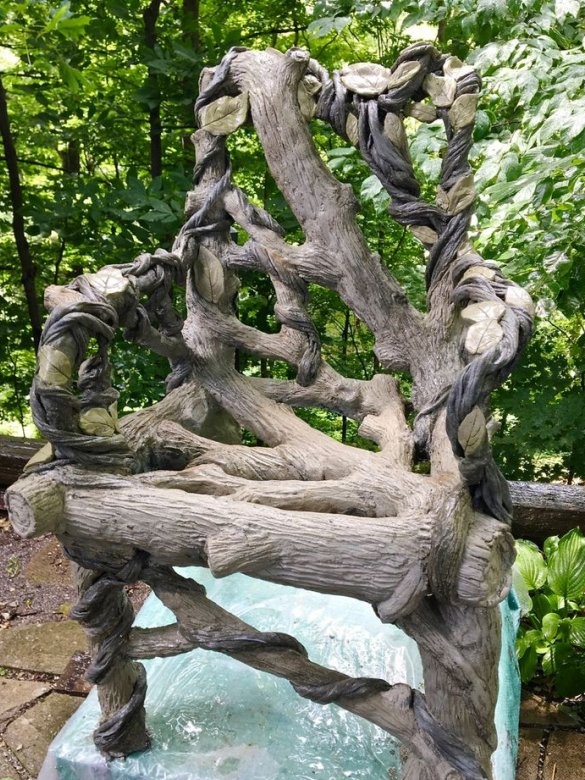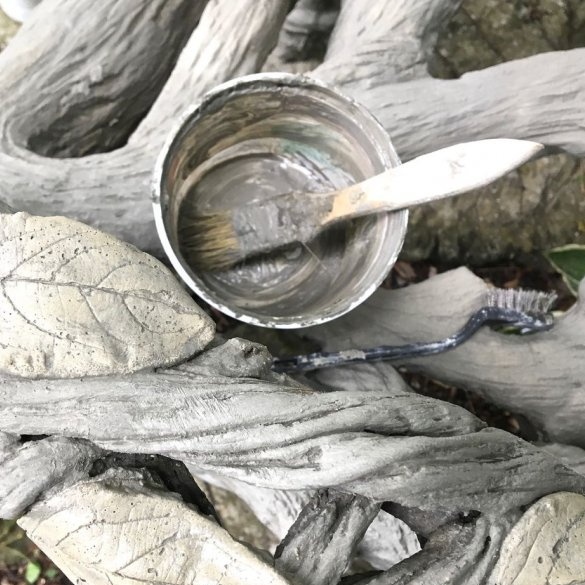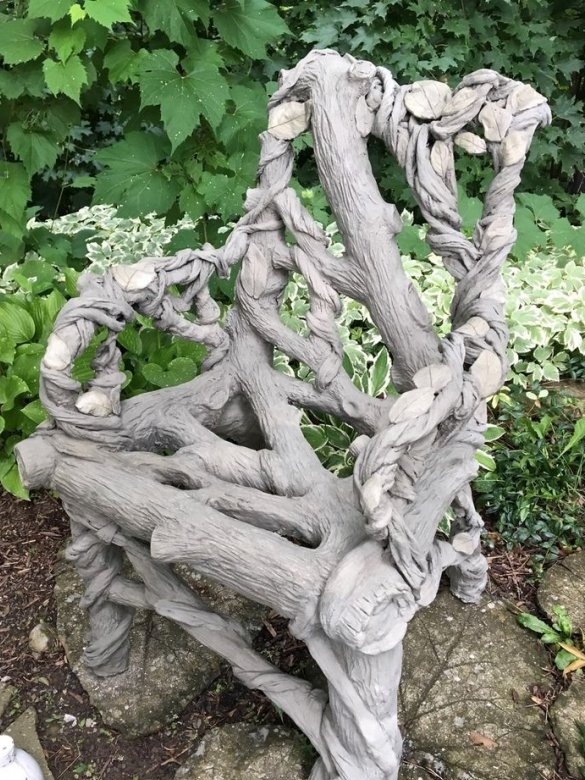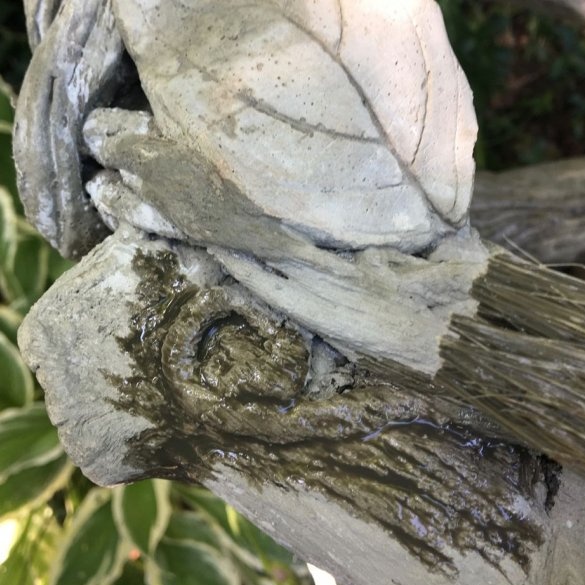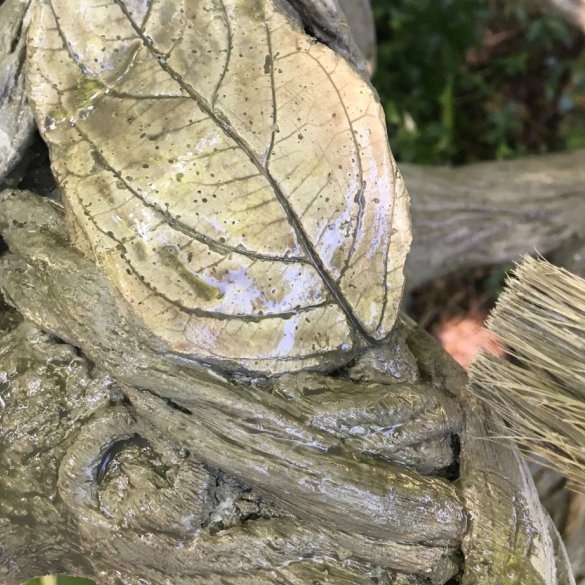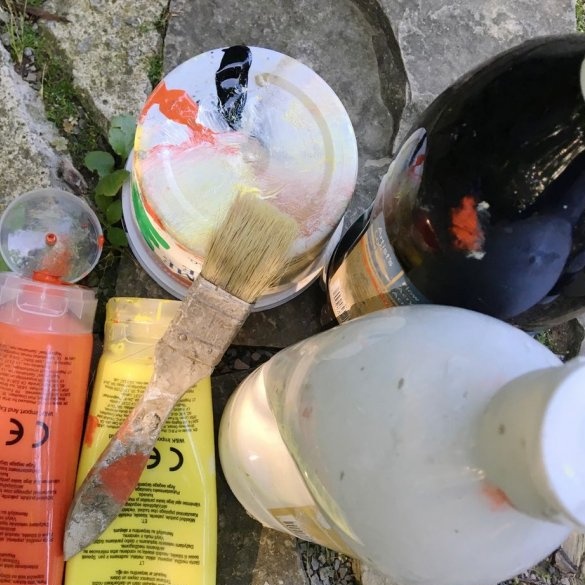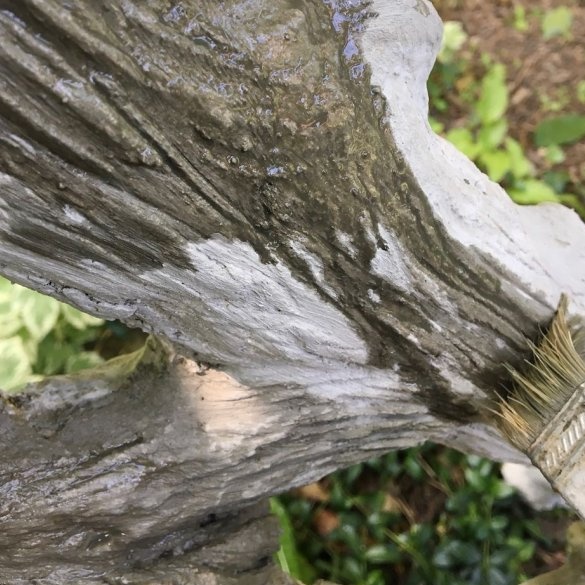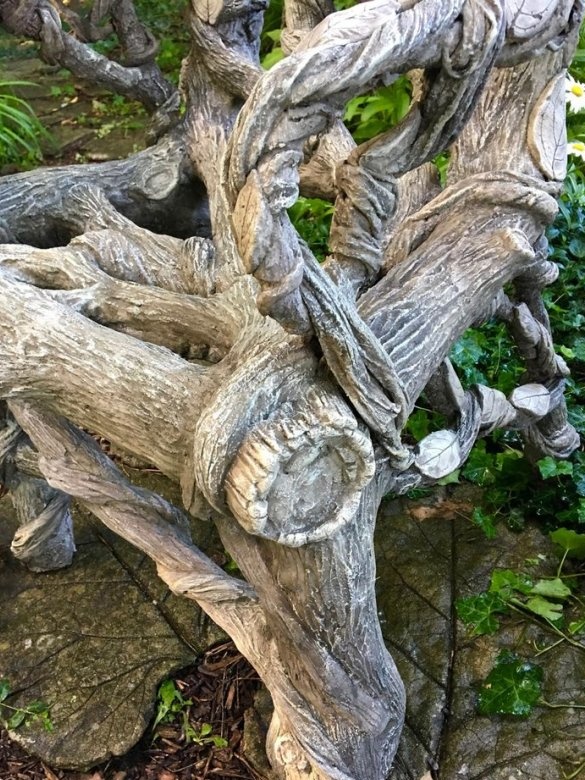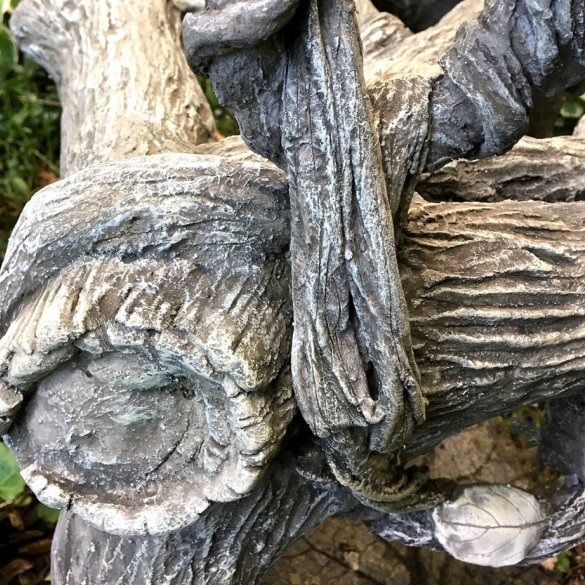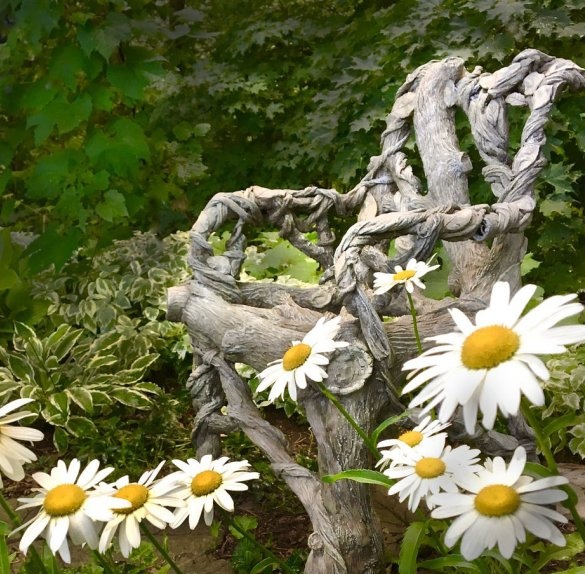At first glance, it may seem that such a chair is difficult to manufacture, but this is a mistaken opinion, everything is much simpler. But first, let's see what kind of Faux Bois technique it is.
Faux Bois refers to the artistic imitation of wood or wood structure in various environments. This technique has its roots in the Renaissance. The French garden masters, who were called "rockylers", used the usual materials: rods, cask ribbons and wire mesh. With the invention of cement, for the French exhibition in 1867, a reinforced concrete bridge was built. This bridge was made in the style of Faux Bois, the details of the bridge were made in such a way that they looked like wooden ones.
It was in this style that the master made this chair.
So, for this job, you will need the following
Tools and materials:
-Portland cement;
-Wire;
- Frame from a chair;
-Mesh, metal and plastic;
-The wire;
-Heater for pipes;
-Paint;
-The cloth;
-Mixer;
-Capacity for mixing;
-Knife;
- Paint brushes;
-Toothbrushes;
-Wire brush;
-Sandpaper;
-Scissors;
-Pliers;
-Gloves;
-Respirator;
Step One: Wireframe
The frame can be made by yourself, using fittings and a welding machine, but the master had a frame from the old chair, and he decided to use it.
There are many ways to add reinforcing material to the frame to hold concrete in place. The master decided to use material that was at hand; metal wire mesh, plastic mesh, fabric, etc., as well as some fillers, such as fabric, insulation, etc.
The winding of the mesh and filler around the frame was made using a tie wire.
Branches, as a rule, rise up and become thinner. Trees are usually not symmetrical or not perfect. The framework is also done, from thick to thin. The legs of the chair look like the base of a tree.
Step Two: Winding
For winding, you need a strong fabric that can hold cement and does not absorb much moisture. The master took advantage of the old blanket. Rinsed it. Prepared a solution of Portland cement.I mixed strips of fabric with cement. I wrapped the chair frame in stripes. Then the master covers the chair until it dries. Periodically, you need to moisten the frame.
Step Three: Cover
After the cement has dried, the master covers the chair with Cement All. This mixture sets very quickly and to slow down, you can dilute the mixture with cold water or add citric acid.
The master kneads the mixture and begins to cover the frame with a spatula, a paint brush and hands. In this step, you need to give the surface a structure similar to a tree trunk.
Step Four: Scenery
In order to achieve the effect of the vine, the master soaks the strips of fabric in Cement All, twists them and fastens them on a chair. Brushes the mixture over the fabric.
The leaves are real, from the trees. The master puts Cement All solution on them and fixes them in the right places.
To give a darker color, some places, the master, lightly covers Portland cement. Stir it without sand with a little water.
It paints some parts.
Everything is ready, such a wonderful item has turned out of an unnecessary thing.

